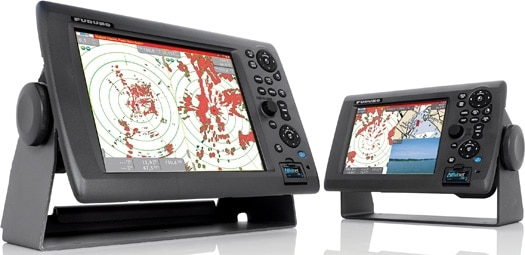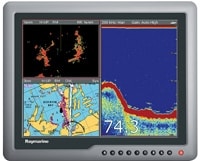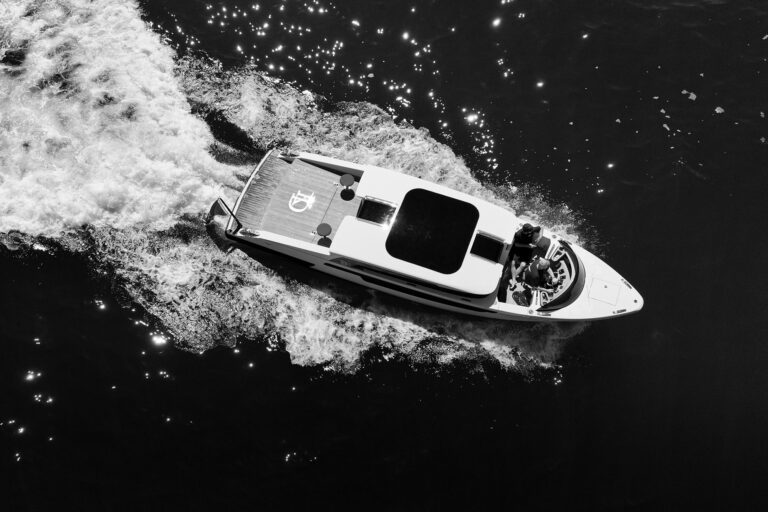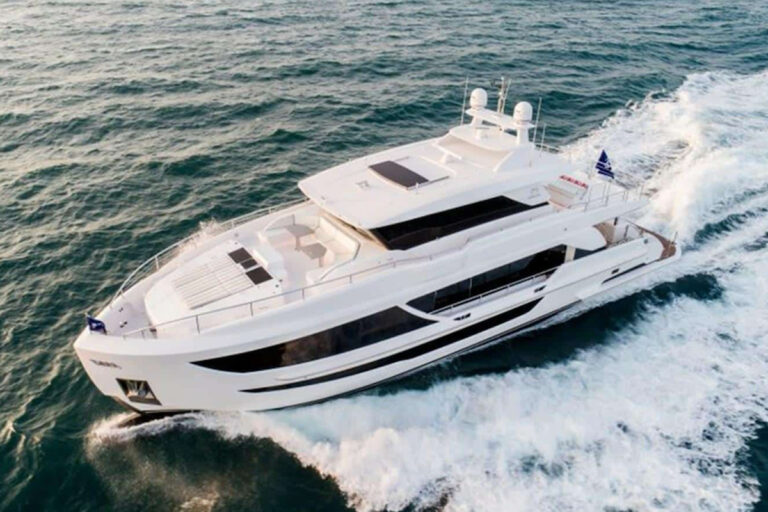
radarjan081.jpg
Two of the major players in the marine radar and multifunction navigation display system market have just introduced advanced technology digital radars. Furuno’s Ultra High Definition (UHD) radar and Raymarine’s High Definition (HD) radar provide significant improvements in all aspects of performance. The manufacturers’ claims that these (choose a superlative) Ultra High Definition or High Definition radars provide the navigator with a clearer, more precisely defined image of the surrounding waters are confirmed by what you will see on the display screens. Both radars digitize the analog radar energy received by their antennas and use advanced Digital Signal Processing (DSP) technology to extract the desired navigation information while automatically suppressing noise and interference.
These new digital high-definition radars are components of their manufacturers latest integrated multifunction navigation, NavNet 3D from Furuno and the G-Series Navigation System from Raymarine. Radar images can be displayed individually, in a split screen mode that provides the full functionality of having two complete radars on board, or overlaid on the navigation chart. The introduction of both of these comprehensive navigation systems marks a significant advance in the state of the art for this class of equipment.
The radar images on both the Furuno and Raymarine multifunction displays were clearly superior to their previous offerings. Both very small and quite massive targets were very sharply defined. The screens were remarkably free of sea clutter and other normally encountered intermittent interference. Both radars can be operated in a simultaneous dual-range mode, providing the functional advantage of two separate radars.
Other manufacturers, including Garmin, JRC and Northstar, have offered yacht radars that process the received signal digitally, however they have not yet achieved the level of performance or struck the spark of excitement that the combination of features incorporated in these new (and somewhat more costly) Furuno and Raymarine units are likely to create, especially when the advanced simultaneous dual-range features of these systems are viewed on their new NavNet 3D and G-Series chart plotter displays.
Both radar systems provide precise automatic adjustment of gain, sea state and rain rejection plus full range manual adjustment for all parameters. The performance of the processing circuits used to optimize the radar image has been significantly improved. For example, sea clutter interference is reduced by automatically adjusting the received signal processing circuits for each successive search bearing rather than relying upon a global adjustment that treats the entire screen equally. Raymarine’s system simplifies operator adjustment of the radar with an additional choice of four preset operating modes: Buoy, Harbor, Coastal and Offshore, each optimized for the average conditions implied by their names, ranging from a flat water surface viewed at short range to moderate open sea conditions. The signal-shape-based data processing employed in digital radar improves the ability of the system to differentiate between closely adjacent targets and reduces interference that results from the side lobes of the antenna. The result is a cleaner, more precise radar image of both close-in and distant targets.

| |RAYMARINE: This company’s G-Series high-definition radar “look twice,” alternately transmitting at the pulse length and PRF required to produce the optimum image of each of the ranges.|
The Furuno and Raymarine high-definition radars provide a new and very useful dual-range capability, without the performance compromise inherent in previous systems that used a single pulse length and pulse repetition rate for both ranges. These new radars can “look twice,” alternately transmitting radar energy at the pulse length and PRF required to produce the optimum radar image at each of the selected ranges. The navigator is presented with two independently controlled screen images, which are optimized for each range. Each screen image is managed separately, with automatic optimization of the display or with full manual adjustment of each control. The result is the full-functional equivalent of having two separate radars.
The move toward incorporating the entire radar transmitter, receiver and data processing circuitry within the radar antenna assembly (pioneered by Si-Tex and more recently used by Garmin and Northstar) continues in the new Furuno UHD and Raymarine HD radars. The benefit of incorporating the entire radar in the antenna is obvious during installation. The rather large diameter multi-conductor cable previously required to connect the antenna system to the remainder of the radar signal processing circuitry is eliminated and replaced by a two-wire power cable and a digital signal bus Ethernet cable (although Raymarine avoids the term Ethernet when describing their communication bus, essentially an Ethernet bus with a different IP structure). All of the control commands to the radar antenna system and the processed radar information flow to and from the wheelhouse equipment via the digital bus. Furuno has equipped its radar antenna assemblies with a pair of NMEA 2000 connectors. GPS receivers, weather sensors and other devices installed on or near the radar mast and which employ the NMEA 2000 data communication protocol, may be plugged into the antenna. Then the vessel’s data network automatically connects them to the system, eliminating the need for additional cabling.
The screen image of a marine radar is updated in step with the rotation of the antenna, with most operating at a constant 24 rpm. Radars used on high-speed craft or on rivers where more frequent image updates on shorter ranges can be essential for safety may operate at a higher speed, usually 48 rpm. The new Furuno ultrahigh- definition radar automatically adjusts antenna rotation speeds to 24, 36 and 48 rpm depending on the range.
In addition to their high definition data presentations the new Furuno and Raymarine radars offer expanded ARPA (Automatic Radar Plotting Aid) capability. The Furuno can track 30 targets, the Raymarine a maximum of 25. Both systems can plot AIS (Automatic Information System) data on the radar screen, greatly simplifying the identification of targets, the surveillance and tracking of their movement relative to your own vessel, significantly enhancing radar’s primary purpose, collision avoidance.
Future developments in marine radar are presaged by the development of radars that replace the transmitter’s magnetron with a solid state amplifier. Military and aircraft radars using this technology are already in service. Kelvin Hughes has developed a solid state transmitter radar, Sharp Eye, for commercial S Band radar. The system uses Doppler signal processing and will provide superior imaging of even very small targets. Development of solid state radar for yachts will evolve with the availability of transmitter components capable of operating at the higher, X band frequency used for most yacht installations.









